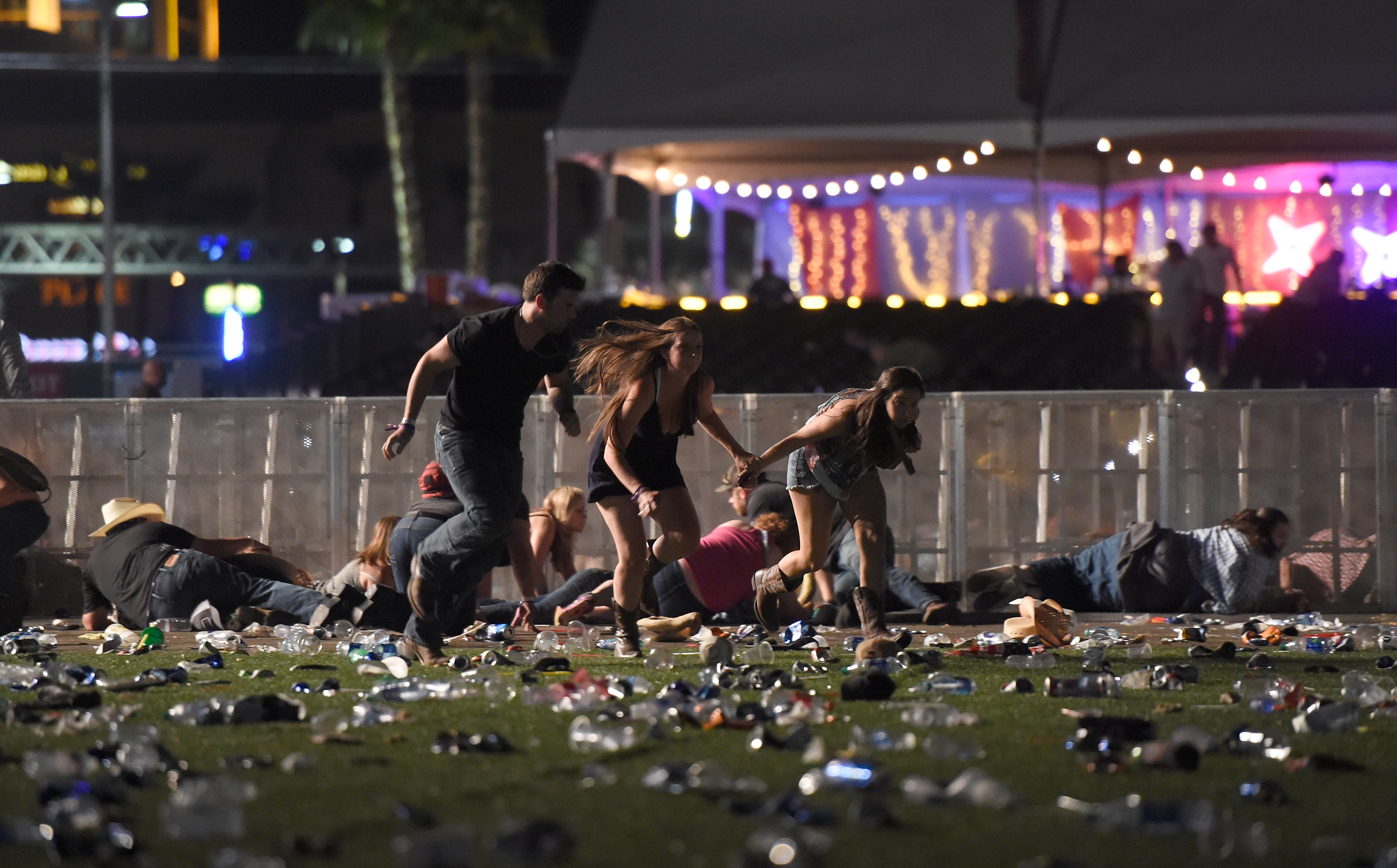Las Vegas concert shooting of 2017 was the deadliest mass shooting in United States history. It took place in Las Vegas, Nevada, on Oct. 1, 2017. A gunman firing from a high-rise casino hotel shot hundreds of people who were attending a country music concert at a nearby outdoor concert venue. Sixty people were killed in the incident or died later of their wounds. As one of a series of increasingly frequent mass killings, the incident again raised discussions about the ready availability of high-powered, rapid-shooting firearms in the United States.
The shooting.
On the evening of October 1, thousands of country music fans were attending the last show of the three-day Route 91 Harvest Festival at the Las Vegas Village concert venue. At about 9:40 p.m., Jason Aldean and his band began the festival’s final performance. At about 10:05 p.m., a gunman began firing into the crowd from a 32nd floor window in the nearby Mandalay Bay casino hotel. Some concertgoers, not realizing they were being fired upon from above, dived to the ground in attempts to escape the gunfire. Many others ran. Some estimates indicated that the gunman shot more than 1,000 rounds into the crowd before he stopped firing at about 10:15 p.m. Police later reported that 58 people had been fatally shot, and hundreds more were wounded. Two people died of their wounds in the years following the incident.

The first members of the hotel’s armed security team reached the 32nd floor at about 10:12 p.m. Police and additional hotel security soon joined them. About an hour later, police stormed the room and found that the suspect had killed himself by gunshot.
Investigation and motive.
Police identified the shooter as Stephen Paddock, a wealthy 64-year-old retiree and avid gambler who had been living in Mesquite, Nevada. Authorities believe that Paddock planned the shooting for months. In the 11 months prior to the shooting, Paddock had legally purchased more than 55 firearms—mostly rifles—and thousands of rounds of ammunition. A number of his rifles were equipped with “bump stocks”—devices that allow the guns to fire more rapidly.
According to investigators, Paddock checked into the Mandalay Bay Resort and Casino on September 25. Over the next several days, Paddock brought a total of 24 guns, thousands of rounds of ammunition, and other supplies to his suite on the 32nd floor. He installed surveillance cameras in his suite and in the hallway outside. The Route 91 Harvest Festival began on September 29.
Early investigations revealed no motive for the shooting. Investigators discovered no links to terrorist groups or ideology. They found no evidence that anyone had assisted the shooter with his plan of attack.
Additional details revealed.
Police and news organizations, comparing hotel surveillance video and the cell phone videos of a number of bystanders, later compiled a timeline of the October 1 incident. Jesus Campos, an unarmed Mandalay Bay security guard, responded to a routine alarm triggered by a door left open on the 32nd floor and arrived near Paddock’s suite just prior to 10 p.m. Paddock began firing on the concert crowd at about 10:05 p.m. At 10:06 p.m., investigators believe that the shooter fired through his hotel room door, wounding Campos. Campos radioed for help but in the confusion, police officers did not reach the shooter’s floor and room until after the shooting stopped. At about 11:20 p.m., police used an explosive to gain access to Paddock’s room. According to official reports, Paddock lay dead from a self-inflicted gunshot wound.
Authorities believed that Paddock had aimed not only at concertgoers, but also shot at fuel tanks in hopes of starting explosions and fires. A search of Paddock’s vehicle later revealed additional ammunition and about 50 pounds (23 kilograms) of explosives.
Aftermath.
The death toll in the Las Vegas concert shooting surpassed the 49 killed in an Orlando, Florida, nightclub shooting in June 2016. Lawmakers, as they had in the aftermath of numerous mass shootings, debated whether types of firearms or firearm accessories should face additional regulation. Some observers, asking why a man could purchase dozens of guns over a matter of months without raising police suspicion, called into question the nation’s culture of permissiveness on gun issues.
